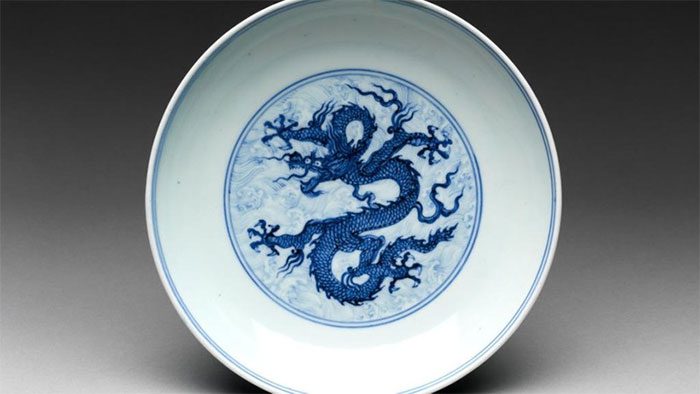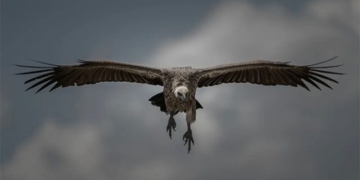Dragons appear in various forms around the world. Sometimes they are terrifying monsters, while at other times they are friends of humanity.
Legends of Dragons Worldwide
Chinese Dragons
The dragons of China are a national symbol. While European dragons are often depicted as malevolent and greedy creatures, Chinese dragons are consistently portrayed as benevolent, generous, and associated with water.
The rains they bring help crops grow and sustain human populations. Thus, they have been regarded as symbols of power and prosperity in China for thousands of years.
Chinese dragons are described as composite creatures, featuring a camel’s head, deer antlers, cow ears, a snake-like body, fish scales, eagle legs, and tiger claws.
Other descriptions may list various animal attributes, but dragons are consistently depicted throughout the history of Chinese art. They are powerful beings that possess the abilities to change size, bring rain, and cause great floods.
Similar dragons play an important role in the mythology of other East and Southeast Asian countries, such as Japan, Korea, Vietnam, Thailand, Malaysia, Bhutan, and the Philippines. The dragons of these countries bear a striking resemblance to Chinese dragons, sharing the essence of being water and life-bringers.

Dragon on a Chinese plate from 1430.
Greco-Roman Dragons
The word “dragon” in modern English derives from “draco” in Latin and “drakon” in Ancient Greek. “Draco” can mean serpent or dragon. True to their name, the dragons of Greco-Roman mythology are often depicted as sea serpents or large snakes with poisonous breath.
For example, the Colchian Dragon never slept, tasked with guarding the golden fleece of the war god Ares in Colchis. Two heroes, Jason and the Argonauts, came to steal the golden fleece and killed it by luring it to sleep.
Dragons in Ancient Mesopotamia
Another myth about dragons originates from the ancient civilization of Mesopotamia. These dragons are based on the imagery of serpents and lions in mythology and belief systems. For instance, Tiamat is a goddess representing the chaos of the sea and creation, sometimes depicted as a sea serpent.
Her consort, Abzu, is a benevolent freshwater serpent. Together, they gave birth to a generation of younger gods. Following them is Mushhushshu, a creature that combines features of a serpent, lion, eagle, and scorpion, serving the god Marduk. The Mushushshu dragon can be seen on the famous Ishtar Gate.
Dragons in Australia
The distinctive dragons prominent in the beliefs and mythology of many Aboriginal Australian cultures are believed to be the Rainbow Serpent. Numerous stories feature the Rainbow Serpent, not all of which agree on its nature and characteristics.
However, common descriptions depict these entities as creator gods associated with water and air. They move between waterholes and pathways marked by rainbows.
Dreamtime stories about the Rainbow Serpent occur simultaneously in the past, present, and future, making these entities a permanent presence in the lives of Indigenous peoples practicing traditional beliefs.
Dragons in the Americas
Serpent-like entities also appear in the mythology and beliefs of thousands of North and South American cultures. For example, stories of horned snakes have been told throughout much of what is now the Eastern United States, featuring various characteristics but commonly described as large sea snakes with antlers, brilliant scales, and a large gemstone or crystal embedded in their foreheads.
The horned snake is believed to not directly harm humans, but those who see it risk going mad or encountering misfortune. Although they may not be considered true dragons in the technical sense, the feathered serpents of Central America bear remarkable similarities to these mythical creatures.
European Dragons

Mural depicting a dragon from 1200 at a monastery in Spain.
Perhaps the most familiar dragon to Western audiences today is the scaly, fire-breathing variety from medieval European legends. These creatures are often described as large reptiles with four legs, bat-like wings, and long necks and tails.
They may be descendants of Mesopotamian dragons and Greco-Roman dragons, regarded as sinister creatures sitting on hoards of gold and terrorizing surrounding kingdoms.
Only a brave and virtuous warrior can defeat them and claim their treasure. Notable dragons in Europe include Beowulf’s dragon and Fafnir from Norse sagas. King Arthur and Merlin frequently encountered dragons, which have become a common symbol throughout Europe.
| The origin of dragons is perhaps most widely accepted as based on the presence of dinosaur bones. The ancients had no way of knowing these bones belonged to ancient reptiles from over 65 million years ago. Thus, they may have inspired most dragon stories. |


















































